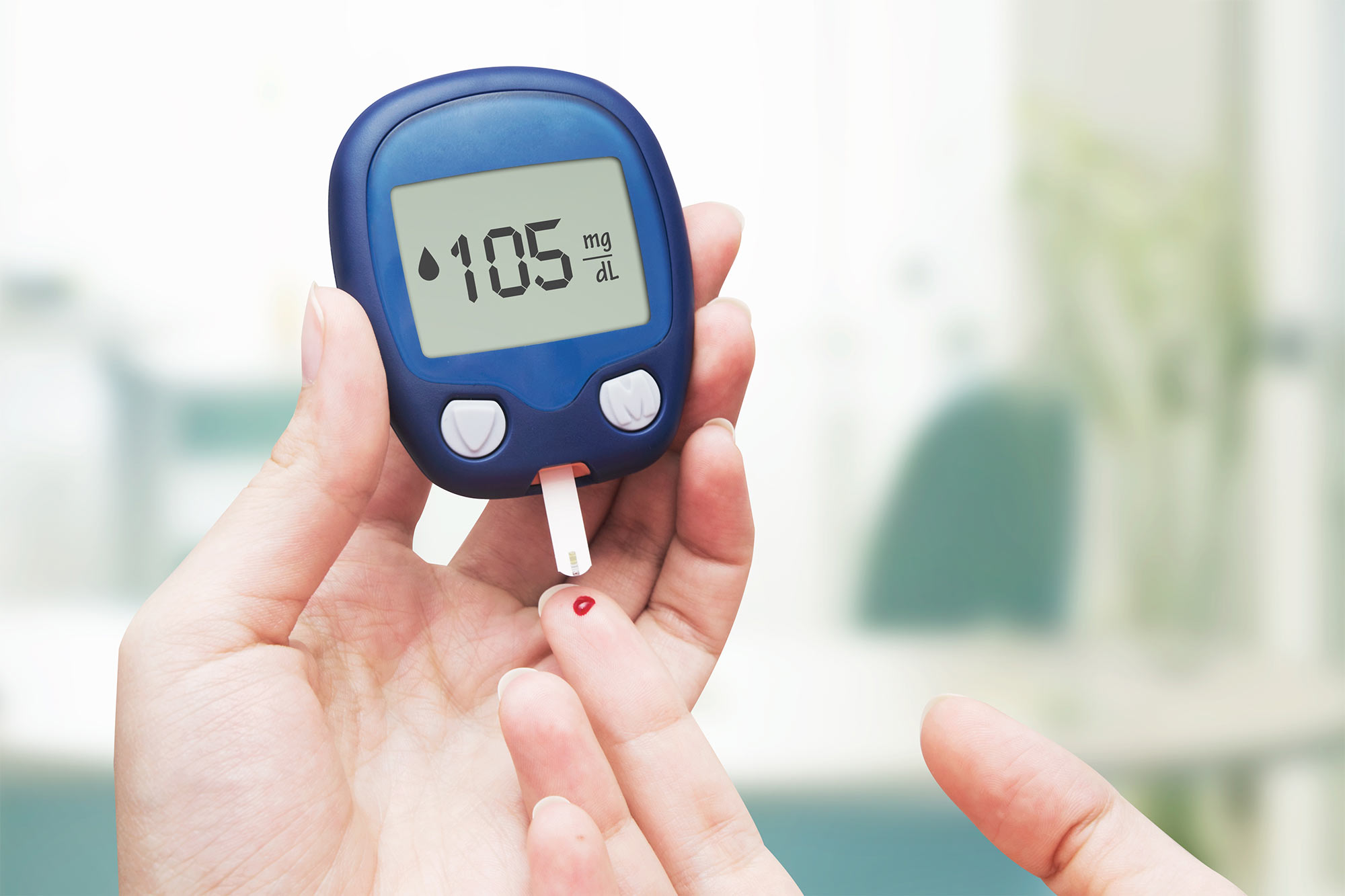Diabetes begins and ends with insulin.
Diabetes is a disease brought about by your body’s reaction to insulin, or to the lack of it.
 Insulin is a hormone that is produced by the pancreas. One of the roles played by the insulin is to control the levels of sugar in the bloodstream. Sugar or glucose is the fuel that drives the body. It is the end product of the breakdown of food. If insulin is absent or if it does not play its role effectively, excess sugar ends up in the bloodstream. In normal circumstances, the liver, muscles, and fat cells use up the sugar while the excess is stored in the liver in the form of glycogen. In diabetics, insulin does not signal the cells to use the glucose.
Insulin is a hormone that is produced by the pancreas. One of the roles played by the insulin is to control the levels of sugar in the bloodstream. Sugar or glucose is the fuel that drives the body. It is the end product of the breakdown of food. If insulin is absent or if it does not play its role effectively, excess sugar ends up in the bloodstream. In normal circumstances, the liver, muscles, and fat cells use up the sugar while the excess is stored in the liver in the form of glycogen. In diabetics, insulin does not signal the cells to use the glucose.
There are two types of diabetes, and their origin, development, and possible treatments are unique. Though similar conditions, type 1 and type 2 diabetes are very different.
What is Type 1 Diabetes?
In type 1 diabetes, the body does not produce insulin. In some type 1 cases, the body does try to produce insulin, but the amount produced is too little to help the body regulate blood sugar levels.
Type 1 diabetes is an autoimmune ailment, which means that it is brought about by a malfunctioning immune system. It attacks and destroys the insulin-producing cells after mistaking them for enemies. This leaves the body unable to produce insulin–and this can lead to death if not corrected.
Doctors and researchers don’t know what triggers type 1 diabetes, but genetics is thought to play a big role. Different environmental factors could also trigger the rogue gene to become active.
What is Type 2 Diabetes?
In type 2 diabetes, the body’s sugar levels are also high. However, this isn’t due to a lack of insulin; it’s because the body is using insulin inefficiently. Some type 2 diabetes patients also produce too little insulin.
The onset of type 2 diabetes is gradual. There are many factors that can lead to it. Although genetics may predispose one to this condition, a sedentary lifestyle, obesity, and poor diet can all also lead to the onset of this form of diabetes. The body still produces insulin in the early stages of type 2 diabetes, but does not put it to use.
The Risks of Diabetes
What makes both types of diabetes such a major health issue are the complications that arise if the disease is not managed. The high levels of sugar in the blood can damage nerves, blood vessels, and internal organs, particularly the kidneys and heart. Poorly managed diabetes of either type can also lead to blindness, heart disease, stroke, and the amputation of limbs if wounds do not heal easily.
Since insulin is required to manage diabetes, pharmaceutical companies have long been searching for the most suitable form of this hormone. Initially, insulin was produced from animal sources, particularly pigs. Today, however, most of the insulin prescribed is synthetic, or made in laboratories.
How to Differentiate Type 1 From Type 2
They’re Diagnosed Differently
Although not a hard and fast rule, type 1 diabetes is diagnosed in childhood and affects around 5% of all diabetes-affected patients. For this reason, it was at one time referred to as “juvenile diabetes.”
Type 1 diabetes appears early in a person’s life. The average age for diagnosis is 14 in the United States, meaning type 1 sufferers must learn to live with their condition for a lifetime. This less common type of diabetes brings symptoms like fatigue, more frequent urination, extreme hunger, and sugary (or fruity) scented breath.
Type 2 diabetes is commonly diagnosed in adulthood around age 40. Being above 45 years old is one of the factors that increases the risk of this disease.
Since the onset of type 2 diabetes is gradual, it is more difficult to detect immediately. Some of the signs to watch out for are frequent urination, thirst, failing eyesight, an unexplained sudden weight loss, and wounds that take longer to heal than usual. For men, erectile dysfunction could also occur. If you notice one or a combination of these signs, you should visit your doctor for a blood sugar test. Should you have the disease, a nutritionist will usually advise you about the type of diet to follow.
Exercise is also recommended, since obesity is one of the factors that puts individuals at risk of type 2 diabetes. As you age, you should also have regular checks to test your blood sugar.
One Type Can Be Reversed–And The Other Cannot
Perhaps ones of the most important distinctions between type 1 and type 2 diabetes is the severity of the condition.
While type 2 diabetes can be brought on by a combination of predisposition, unhealthy habits, and other related health problems, it can be reversed. With the right treatment plan and lifestyle changes, those diagnosed with type 2 could live free of diabetes. In fact, some individuals with type 2 diabetes don’t even need insulin or medications; a dietary change can be enough to cure the condition.
Type 1 diabetes, however, cannot be reversed. Because this form of the disease arises from an autoimmune response within the body, those who suffer from type 1 must live with its effects. Management, not treatment, is the only option. The body cannot produce its own insulin, so currently there is no alternative or solution that can cure type 1 diabetes.
Their Treatment Plans Differ
As mentioned, type 1 diabetes is incurable and type 2 can be reversed with great care and proper treatment.
Type 1 diabetes patients must take insulin daily through injections or a pump that releases insulin automatically every few hours. Insulin levels have to be monitored at least 4 times a day using an instrument known as a glucometer. Since the levels of insulin continuously fluctuate in type 1 sufferers, there is a risk of the blood sugar becoming too low. This is known as hypoglycemia, a condition that can lead to dizziness, weakness, or falling unconscious.
Low blood sugar could be fatal. There have been cases of type 1 diabetes patients losing consciousness while driving, cooking, or carrying out other such activities. If the patient is not attended to fast, they might go into a coma. Usually, a sugary snack or drink is enough to revive a type 1 diabetes patient. In fact, such patients can usually take any type of food they want with no worries. The key to remaining okay is to match the amount and type of food to their insulin intake.
Type 2 diabetes patients manage their condition in a different way. They, too, have to make sure their sugar levels remain stable. In particular, they should stay away from sugary foods and drinks, along with anything high in refined carbohydrates. This form of the disease is often easily managed by changes in diet–limiting fast food, increasing leafy greens, and avoiding any foods that could be converted into sugar are common adjustments. If the condition worsens, a type 2 diabetic may need to take medications that help regulate blood sugar; some may also need insulin injections like type 1 patients.
Know What’s Most Important About Type 1 and Type 2
Whether you’re a diagnosed diabetic or someone who wants to be prepared for that possibility, it’s a smart idea to understand the difference between type 1 and type 2. Though similar and related conditions, these illnesses do differ significantly– and it’s a safe, smart idea to know what separates the two types of diabetes.


